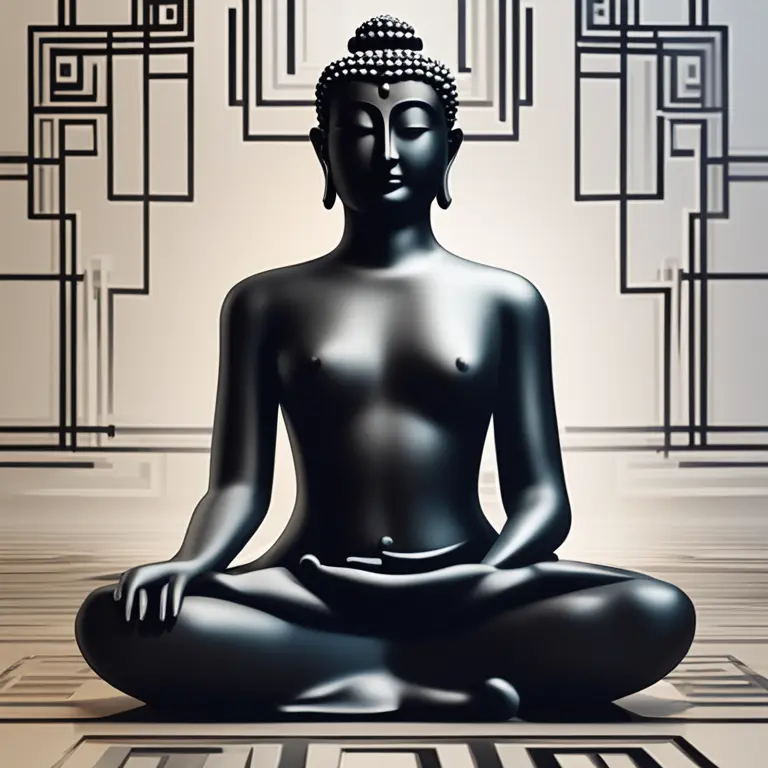
Mindfulness Beyond Breath: A Guide to Stillness
Discover a unique approach to meditation that transcends traditional breathing exercises, focusing on deep mental clarity and spiritual tranquility.
article by Hina Kurosawa
Introduction to Breathless Meditation
Meditation has long been associated with various breathing techniques aimed at centering the mind and achieving inner peace. However, the concept of meditation without breathing—often referred to as "breathless meditation"—ventures into a deeper consciousness exploration. This method is about disconnecting from the automatic act of breathing to delve into a state of stillness that transcends the physical aspects of traditional practices. Despite the term, it doesn't mean to literally stop breathing, but to move beyond breath as the focal point of the meditation.

The Foundation of Breathless Practice
Before exploring the nuances of breathless meditation, it is essential to understand its roots. Stemming from ancient practices, this meditation style draws from the belief that life energy, or "prana," can be harnessed without a direct concentration on the breath. In 2024, as wellness trends shift towards more profound mind-body connections, breathless meditation gains popularity for its ability to facilitate a deep state of awareness and presence without the physical anchor of breathing exercises.

Entering the Breathless State
Approaching meditation without breathing requires preparation and mental conditioning. It begins with a comfortable posture and an environment conducive to focus and relaxation. Practitioners then engage in a silent inward journey, slowly detaching from the rhythmic patterns of their breath. The transition to breathlessness is gradual and gentle, leading to the discovery of a serene contemplative space where the breath is no longer the guiding force.

The Role of Mindfulness
Mindfulness is a cornerstone of breathless meditation, where attention is anchored on the present moment without the crutch of breathing techniques. This practice showcases a shift in focus from the physiological to the purely mental and spiritual realms. By fostering mindfulness, individuals can achieve a unique state of consciousness characterized by a heightened sense of clarity and stillness.

Benefits of Breathless Meditation
Breathless meditation offers numerous benefits, including reduced stress levels, enhanced concentration, and a deeper understanding of one’s inner self. As current research into mental well-being advances, this form of meditation is recognized for its potential to unlock profound levels of relaxation and self-realization, distinguishing itself in the gamut of mindfulness practices available in 2024 and beyond.
Challenges and Considerations
While the premise of breathless meditation seems simple, it poses unique challenges that must be addressed. Beginners might find the absence of breathing cues disorienting, and it may take time to acclimate to this style. Moreover, the transition should always be approached with patience and, if possible, under the guidance of a seasoned instructor to avoid any potential distress or misconceptions about the practice.
Integrating Breathless Meditation into Daily Life
Incorporating breathless meditation into daily routines is a journey that can bring life-changing insights and a profound sense of peace. To enable this practice to flourish, it is suggested to start slowly, allowing the mind and body to adapt. Over time, individuals may find that the essence of breathless meditation enriches not just their spiritual practices but also their everyday experiences.
Published: 1/14/2024
Modified: 1/15/2024
More predictions
Come back here soon to learn more about yourself and your future


Calming the Storm: Mindfulness Meditation for Anger
Discover how mindfulness meditation can be a powerful tool for anger management, promoting inner peace and emotional balance.


Mindfulness Meditation: A Handbook for High Schoolers
Discover how mindfulness meditation can benefit high school students, enhancing focus, reducing stress, and promoting overall well-being.


Discovering Life with Meditation Mantras
Delve into the transformative power of meditation mantras to harmonize your mind, body, and spirit for a tranquil existence.